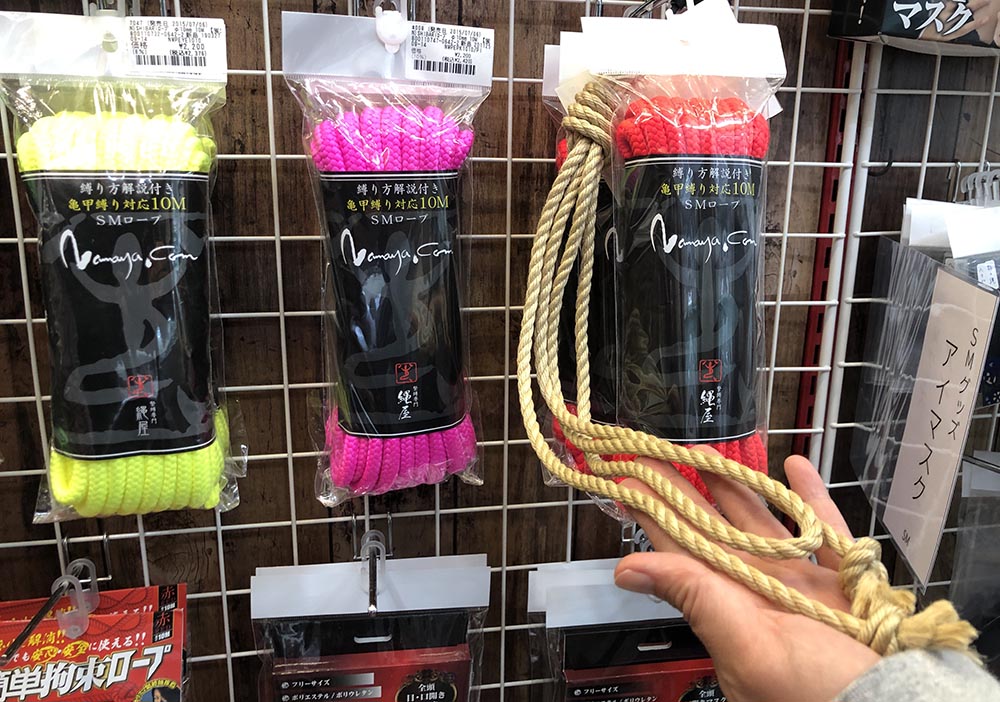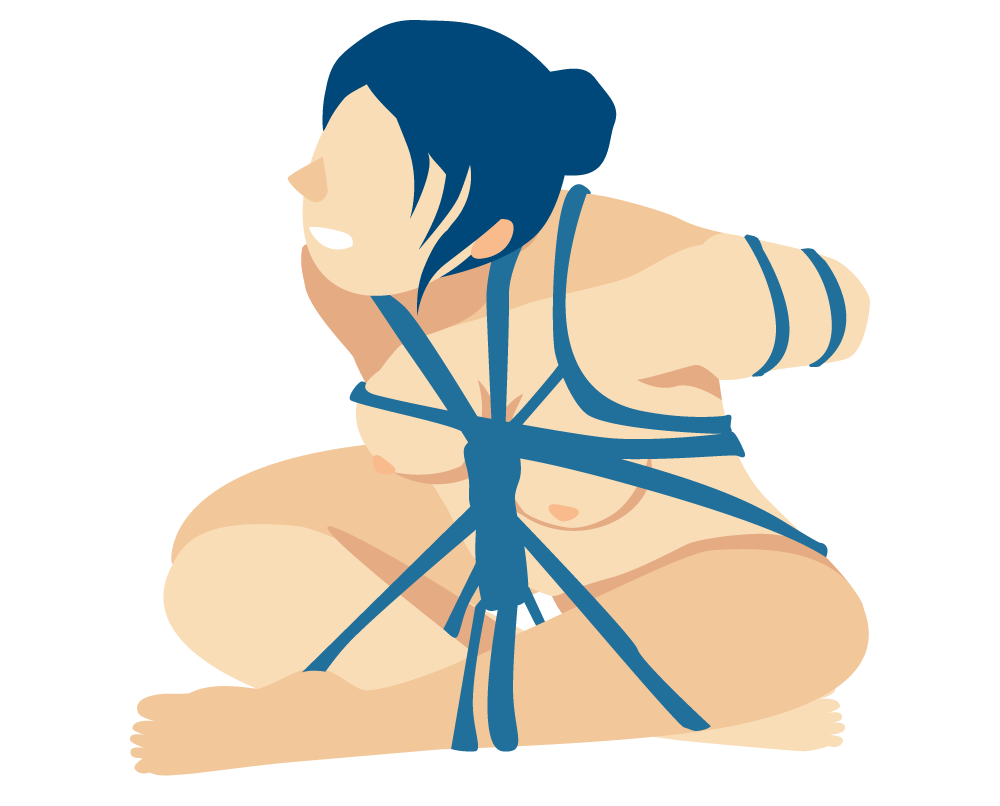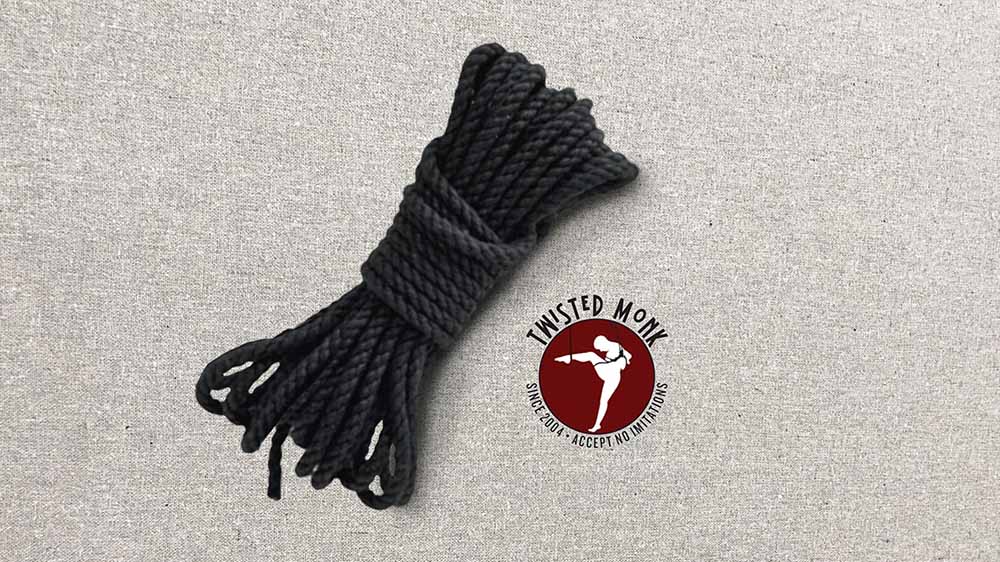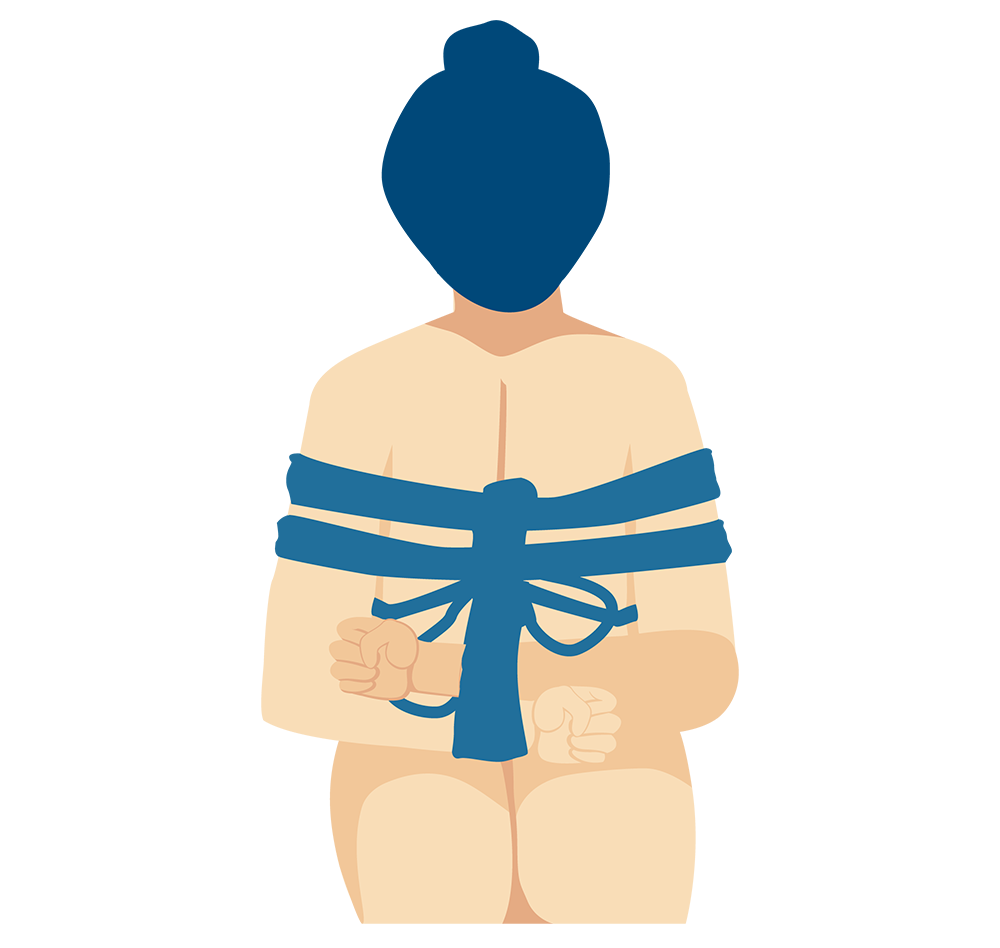My father is Japanese, and once I finished school in the USA, I moved to Japan to live and work as an English teacher. I spent my twenties enjoying wild times in the heart of Tokyo, with a growing appetite for kink and pleasure confirming that I was in the right place to expand my experiences. After that, I became a regular at some of Japan’s underground fetish clubs and swingers bars and gravitated towards people with similar lifestyles. One thing I became especially fond of was Shibari rope bondage.
Ever since I tried Shibari with my partner, I have been hooked. It’s calming, soothing, and erotic, and my rope bunnies like the feeling of giving up control. While it looks a bit scary, Japanese bondage is nothing to be afraid of as it has many benefits.
However, there are many safety aspects you need to consider before starting and choosing the right partner is one of them—this and rope bondage techniques we will discuss below. But let’s first start with defining what Shibari really is.
Table Of Contents
What is Shibari?
Shibari is a style of rope bondage in which intricate and beautiful knots are used to restrain a partner. [1] Known as Kinbaku, the participants use age-old techniques to tie and bind a person, creating a strong connection between those involved. Some positions can be uncomfortable or even painful, but Shibari enthusiasts enjoy the journey and exchange of emotions that can come with putting total trust in each other.
The practice mainly involves two people: the rope top or “rigger” (the dominant person doing the tying) and the rope bottom, “bunny” or “Rope Bunny” (the submissive one to be tied) [2].
The psychological impact of Shibari includes a deep emotional connection and a heightened sense of vulnerability and trust between the rigger and the rope bunny. Engaging in this sex act can lead to a profound exploration of personal limits and desires, offering an intense emotional release and strengthening the bond between participants through shared experiences of power dynamics.
History of Shibari
Shibari hasn’t always been about pleasure. It originated as far back as the 1200s, when Japanese prisoners were severely punished with Hojojutsu ties – the traditional martial art used by the Samurai to intricately restrain a person, causing severe pain, torture, and discomfort [3].
Shibari/Kinbaku/Shibaru as we know it began to take shape in the early 1900s, gradually finding its way into the Japanese underground adult scene and morphing into a Japanese erotic bondage practice by the late 19th century.
It’s thought the practice was brought back to the United States by GIs returning from the Second World War. Since then, it has steadily developed into a 21st-century form of bondage and art, with its styles as varied as the people participating.
Around the world, Shibari rope bondage is now popular with people from all walks of life, and depending on who you ask, it can be considered a kink, a Japanese art form, or a BDSM lifestyle in itself.
Why Do People Love It So Much?
Couples love Shibari for many reasons, but communication and pleasure are two constants.
It can feel edgy and exciting or comforting and relaxing. It can also be painful and extreme or gentle and therapeutic. Further, it offers feelings of empowerment, control, and submissiveness.
For a rigger, the rope work demands attention to detail – the time spent perfecting the knots can be both meditative and satisfying. You can say it’s almost an art form, making it different than Western-style rope bondage, where you restrain a sub primarily for sexual satisfaction.
Placing complete trust in the partner’s skills and allowing them to let go of all control can be exciting and therapeutic for a bunny.
Shibari be a tool for learning about your partner’s body and emotions and discovering new forms of intimacy together. Through the practice of Shibari, people often learn more about their personal needs and boundaries.
Shibari can also just feel extremely good. The knots used are carefully positioned on the body’s pressure points, hitting the right spots to spark pleasure with every new bondage position.
It also acts as a form of meditative escape, where the focus required during tying and the sensory experience of being bound offers a respite from the outside world’s chaos. This shared vulnerability and the intense focus on the present moment allow individuals to explore aspects of their psyche and emotional landscape that might remain untouched in everyday interactions.
Safety
Newcomers should not underestimate the dangers of Shibari. Working with rope involves a necessary element of risk, and caution is required to avoid injury.
Both physical and emotional risks can occur, and you should be prepared to manage them. Participants should be aware of the risks of nerve damage, cutting off circulation, existing injuries/past traumas, numbness, tingling, and loss of sensation.
Therefore, before tying their rope bunny, rope tops must educate themselves about basic anatomy, such as muscle groups and critical nerve centers. They should also pay careful attention to the bunny’s feedback throughout the whole session.
Another issue is the emotional intensity of the scenes, which requires open communication before and after sessions to ensure both partners feel safe and heard and address any emotional fallout through supportive aftercare.
Note: Japanese-style rope bondage is an advanced sex act, and you need to take great care when doing it. Any action you take upon the information on this website is strictly at your own risk, and we will not be liable for any losses, injuries, or damages. Learn more.
Here are a few things to keep you safe:
Here are more things that the excellent Shibari Academy is recommending [4]:
- Safe Word. Please discuss a safeword beforehand; it should be a word you will not forget. In case of pain, numbness, or boundaries are crossed, your safety word will immediately stop the scene. You can also use a safe signal, such as dropping a ball.
- Bondage Scissors. Also known as safety shears, are among the essential tools to have on hand when practicing Shibari. These purpose-built safety scissors with a round tip will quickly cut through thick rope and prevent skin piercing. If there is loss of circulation, significant discomfort, or problems untying knots quickly, bondage scissors will save the day. Never start a Shibari session without these nearby and within easy reach.
- Location. Make sure you have a comfortable and safe place to play. Something familiar for both parties is always a good option.
- Hydration. Drinking water before being tied and having a water bottle handy during the session is essential.
- Aftercare. Aftercare is an essential part of the Shibari experience, focusing on the emotional and physical well-being of both the rigger and the rope bunny after a session. It involves activities like cuddling, gentle conversation, and ensuring comfort, which helps transition back to a normal state and reinforces trust and connection between partners.
For more safety information, I recommend Remedial Ropes—an excellent resource for learning how to practice safe bondage.
Choosing a Partner
Trust is one of the most critical aspects of Shibari. The rope bottom will be restricted and vulnerable, and the rigger will be taking complete control of someone else’s body, so it is vital to trust your partner completely.
Partner Consent
Like any sexual experience, Shibari requires communication and full consent from everyone involved. Both top and bottom should clarify what they want from their experience, what is (and isn’t) acceptable, and how they will communicate if there is an issue.
Boundaries and hard limits on what is acceptable should be agreed on before you start so everyone can enjoy the experience to the fullest. Even if you have practiced with each other, comfort levels can change over time, so it pays to run through boundaries before every session.
A discussion on boundaries should include establishing the length of time you want to be tied up, accepted positions, safe words, where you can and cannot be touched, safe words, and gestures.
This video, although somewhat quirky, illustrates boundaries and consent very well.
Learning the Basics
With Shibari practice, it’s essential to educate yourself to ensure healthy and safe practice.
Repeating knots over and over will help you become familiar with them until they become second nature; from there, you can slowly build on your skills.
Pro Tip: Never try Shibari with another person until you are one hundred percent sure of your skills.
You can begin safely learning Shibari basics by yourself, such as practicing a leg tie on your limb or a chair leg at home. Practice the same knot repeatedly until you have mastered it, then practice some more. You can even try BDSM Shibari on a mannequin or a sex doll until you feel comfortable doing it on a real person.
There are plenty of great resources out there to learn about Shibari. Here are a few of our recommendations:
Good Shibari Resources & Workshops
Hands-on classes are the best way to learn the correct methods of Shibari rope bondage.
There are Shibari enthusiasts everywhere, and you may be surprised to find a local rope community teaching classes, organizing meet-ups, and skill-shares in your area. Some great online resources available for those who live remotely:
The Shibari Academy offers a free entry-level course with the option to keep progressing with an in-depth course that awards a certificate on completion.
Searching for local groups on FetLife and Shibari threads on Reddit can be helpful.
Crash Restraint is a free online course that you can do at your own pace, with progress recorded as you go along.
Two Knotty Boys has a library of downloadable how-to videos.
The Duchy is one of the oldest and friendliest places on the web to learn about rope bondage.
Reddit and YouTube also have a bunch of excellent Japanese bondage tutorials.
Books are also a great resource when learning ropework, as it’s easy to have open next to you during practice sessions.
Complete Shibari Volume 1 and 2 by Douglas Kent are considered Shibari bibles by some. He also sells high-quality ropes and starter kits.
Some others to check out:
Lee Harrington’s Shibari You Can Use
Jay Wiseman’s Erotic Bondage Handbook
Midori’s The Seductive Art of Japanese Bondage
Basic Shibari Knots
One of the essential rules when tying someone else is to make them feel that you can tie your knots quickly and confidently so they can let go and enjoy. Ideally, you should be able to perform basic ties without looking at your hands, so you can rely on muscle memory, focusing on your partner rather than your knots.
Practicing the basics listed below will give you (and your partner) the confidence to fully enjoy the Shibari experience.
Shibari language refers to tying body parts as connecting columns. Your arms, wrists, and neck are considered columns, and Shibari is about connecting and restraining these columns.
1. Single Column Ties
The foundation of the practice and the best place to start your Shibari journey is with a single-column tie (illustration below).
Whether it’s a wrist, a leg, or a torso, a single-column tie is your starting point and is used as a basis for most other ties as you progress. It’s an essential tie because it won’t collapse and put unwanted pressure on a limb.
There are loads of variations of single-column ties, but one of the most functional is the Burlington Bowline.
2. Double Column Ties
The double-column tie connects two columns: two ankles, two wrists, binding an arm to a forearm, thigh to calf, or even binding a body part to another object like a chair or bedpost (illustration below).
3. More Advanced Ties
The learning curve for Japanese-style bondage will never stop, which may be why it is so enticing and rewarding.
As you progress, your movements become smoother and more efficient, you’re calmer and more confident, the rope feels like an extension of your hands, and maybe the practice takes on deeper feelings than before.
As your skills and confidence progress, you may want to take the next step, from floor to suspension ties. But before you move on to suspension bondage, you need to learn the base ties first and have a thorough understanding of the risks involved. Further, having all the necessary skills is crucial.
We recommend taking advanced classes or being assessed by a Japanese bondage professional before performing suspension work.
Here are some more difficult Shibari ties to show you the possibilities of what Shibari BDSM can achieve.
Common Misconceptions About Shibari
“It’s just about the sex.”
Tying someone requires emotional and physical attentiveness with your partner, and most riggers will spend years or decades honing their skills without the process ending in a sexual encounter.
Yes, traditional Kinbaku has a deep sexual element, and the process of tying and manipulating the body can be very kinky. Still, it often doesn’t have to include sex or even be erotic. Some people tie and model in rope primarily as visual self-expression for relaxation, therapy, performance, or art. Many people also perform Shibari professionally on stage without an X-rated audience.
“Shibari is always painful.”
Shibari Japanese bondage should not be too painful or violent. It all comes down to the participants’ wishes and desires. Some people prefer a gentle practice, while others enjoy the struggle of trying to escape a tight and uncomfortable situation.
If Japanese rope sex involves any pain, the pain should be pleasurable for the sub. Most importantly, the top needs to ensure good communication and the comfort and well-being of both parties are crucial.
“Males are the riggers, and females are the rope bottoms.”
Japanese rope bondage art has no rules regarding who plays what role. It’s entirely up to those involved and the positions in which they desire to immerse themselves. A scene can have any mix of genders in any role.
Japanese Bondage Rope
You can buy Shibari rope in various materials, colors, and thicknesses.
Traditional rope is made from non-stretchy natural fibers such as hemp or jute. However, nylon rope and other synthetic materials commonly used in Western rope bondage have recently become popular.
Choosing the most suitable rope for you will depend on your needs and budget. As a beginner, I recommend avoiding dark colors, as they make it harder to see what is happening with the knots.
1. Hemp Rope
Hemp rope is the best rope to use for Japanese bondage. It is relatively soft but has a solid, dependable feel and breathes well.
Because hemp fibers have a lot of bend, they can fold themselves around the skin’s contours and hold in place with minimal tension.
Hemp fiber ropes are strong but considered heavy compared to other materials.
Although washable, too much water can weaken the rope over time so often that just a light wipe after use is encouraged.
 Good points:
Good points:
- Natural material
- Feels good on the skin
- Antibacterial properties
- Smells good
- Soft
- Very secure
Bad points:
- Heavy
- Not so attractive in photos
- Weakens with frequent washing
- Expensive
2. Jute Rope
In contrast to hemp rope, jute starts very firm but softens over time. People looking for a more macho or sadist approach to their rope play will often prefer it because of its stiff and rough feel against the skin.
Decorative knots will also hold their shape more than soft hemp.
Jute rope is exceptionally light, which helps with the performance aspect of tying ropes smoothly. The weight also makes it a good choice for those looking to practice Shibari outdoors and who need to hike with their kit.
Jute can be very durable, but caution is needed when purchasing to ensure high quality. Many cheap, loosely woven jute products have a much shorter lifespan than rope from a high-quality manufacturer.
Good Points:
- Firm and strong
- Looks great in photos
- Lightweight
- Holds shape
Bad Points:
- It doesn’t stay in place as well as hemp
- It can feel rough on the skin
- Varies in quality
- Requires careful handling after washing

3. Nylon Rope
Nylon is a cheaper synthetic option when buying Shibari rope.
It’s durable, shines beautifully, and is roughly the same weight as hemp rope.
The rope maintains its shape perfectly for decorative knots, but unfortunately, it doesn’t grab well and is known to slip and slide under tension.
Good points:
- Cheaper alternative
- Available in different colors
- Maintains shape
- Easy to wash
- Strong and durable
Bad points
- Knots don’t grab well
- It can feel “unnatural” on skin
Which Sized Rope is Best for Shibari Play?
The choice of diameter typically involves a selection between 4mm and 8mm.
A thinner rope is lighter and easier to tie but will cut into the skin more.
Thicker rope will disperse the pressure across a larger portion of the skin but is stiffer and heavier.
- 6mm rope is the recommended thickness for most Shibari practice, especially if you’re beginning. It seems to be the best compromise between strength, surface coverage, weight, and flexibility.
- 8mm rope will distribute pressure over a wider surface, and some prefer it for tying larger or stronger bodies.
- 4mm rope is preferred for more delicate ties on the hands, feet, head, or genitals. Thin rope is also used for discreet ties worn under clothing.
How Much Shibari Rope Do I Need?
The length of rope you buy depends on what types of ties you want to perform and who you are tying, but here are a few handy guidelines; please note that most ties are performed with a rope folded in half.
- For wrist or ankle cuffs: 10-15 ft is usually sufficient in most situations of tying wrists and ankles.
- For chest ties and hip harnesses: Measure a loop around the fullest part of the hip. You’ll need roughly six times the hip measurement of your rope bunny.
- For full-body harnesses: Measure a loop from the shoulder, down between the legs, and back to the shoulder. Body harnesses will need roughly six or seven times the shoulder-crotch loop measurement.
There are a plethora of quality rope companies out there.
Because of the size and weight of the rope required to start practicing, your cheapest option is probably to find a supplier in your home country.
Shibari Terminology
Shibari – Literally means “to tie” in Japanese, and it’s widely recognized as the name for Japanese rope bondage in English.
Kinbaku – Literally means “tight binding” in Japanese. It refers to erotic rope bondage in Japanese, as Shibari does in English.
Floorwork – To tie your partner on the floor or bed without suspension.
Top – The person who is performing the tie.
Bottom – The person being tied.
Switch – A person who enjoys playing both roles, both rope top and bottom.
Rigger – A person well-versed in rope work.
Bight – The middle of the rope.
Rope Tail – The part of the rope that hasn’t been tied yet.
Hitch – A type of knot used to connect to another rope or object.
Suspension – Method of tying that uses an overhead structure to lift the person.
Partial suspension – When the person tied is suspended but still in contact with the floor.
Bunny – The person being tied.
Self-tie – When a person ties themself. Duh.
Tension – Creating tautness in the rope to give a sensation of bondage and restraint.
Reverse tension – Changing the direction of the rope while still restricting the person.
SSC – The basic philosophy of all rope work: keep it safe, keep it sane, and keep it consensual.
Tim
- 16 Best Sex Toys For Men 2024, REALLY Tested! [VIDEO Reviews] - April 18, 2024
- 18 Best Automatic Male Masturbators 2024, REALLY Tested [Video] - March 22, 2024
- Shibari 101 – A Beginners Guide to Japanese Rope Bondage - March 17, 2024











 Good points:
Good points: